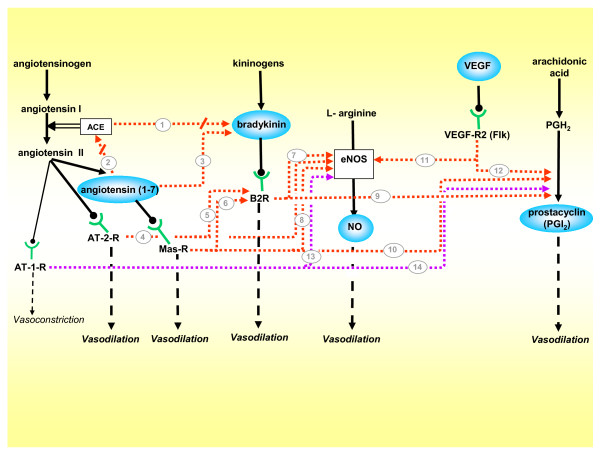Figure 6.
Vasodilatory network, integrated by the five vasodilators included in this review, and their cognate interactions. While the majority of pathways are stimulatory, (1) ACE degrades bradykinin into inactive peptides, and diminishes its vasodilating effect[13], thus when (2) Ang-(1–7) competes with Ang I for ACE it indirectly potentiates bradykinin[16]. (3) Ang-(1–7) also enhances bradykinin activity[17]. (4) The AT-2-R stimulated by Angiotensin II activates eNOS, and (5) the B2R [23-25]. (6) The Mas-R activated by angiotensin-(1–7) stimulates the B2R[20], and (7,8) jointly with bradykinin activates eNOS[19](9,10). Activation of the B2R[13] and the Mas-R stimulates prostacyclin synthesis[21]. (11,12) The VEGF-R2 stimulates eNOS[23] and prostacyclin production[24]. Finally, the classical vasoconstrictor AT-1-R exerts in gestation a paradoxical vasodilatory effect by (13,14) stimulating the synthesis of NO and prostacyclin[95,96]. Stimulatory factors = blue balloons; stimulatory pathways = red arrows; inhibitory pathways = red arrows interrupted by oblique line; pathways exclusive to gestation = purple arrows.

